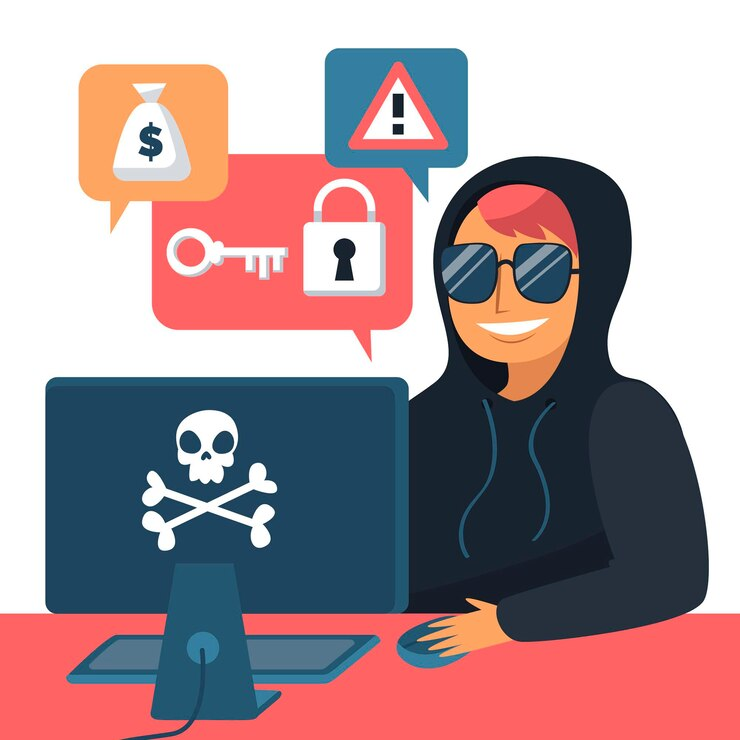
Ransomware is malicious software that destroys files, encrypts, and holds them hostage. It’s one of the most widespread and destructive cybersecurity threats facing individuals and businesses today.
This article outlines a practical guide to understanding ransomware attacks, including prevention measures and recovery tactics.
Oakland, 2003
In 2023, the City of Oakland fell victim to digital paralysis. A ransomware attack was used to cripple the city’s critical systems, cutting off public records access and essential services, including emergency dispatch, online payments.
The hackers demanded a ransom in exchange for the decryption key for the city’s data. This event made national headlines and serves as a severe reminder of the disruptive impact of successful ransomware attacks.
Understanding How Ransomware Threats Work
Ransomware attacks begin by infiltrating your computer or network, encrypting your data, and demanding a ransom in exchange for the decryption key.
Hackers typically threaten to delete or publish your data publicly if the ransom isn’t paid.
Why is Ransomware So Dangerous?
- Data Loss: You can lose or fail to access your critical data. This disrupts operations and may cause serious financial losses. You may even fall victim to digital identity fraud.
- Uncertain Financial Costs: Even if you pay the ransom, you’re not guaranteed absolute data recovery and you may encourage hackers to come back for more.
- Reputational Damage: A successful ransomware attack can be used to damage your reputation and eliminate people’s trust in you.
- Legal and Regulatory Problems: Ransomware data breaches can leave you with legal and regulatory charges.
Proactive Measures to Prevent Ransomware Attacks
When dealing with ransomware, the best defense is a strong offense. Therefore, you must implement proactive security measures to reduce your risk of getting caught by an attack.
1. Strengthen Your Defenses
- Regular Software Updates: Securing your devices includes regular operating system updates, application updates, and security software to remove vulnerable exploits.
- Strong Passwords: Always use strong, unique passwords for all your accounts and devices. You can also enable multi-factor authentication to improve security.
- Watch Out for Phishing Attacks: Carefully go through your emails to filter suspicious links and attachments. Remain updated with information on emerging phishing tactics.
- Reliable Antivirus and Anti-malware: Invest in a reputable security software to detect and prevent malware attacks. Avoid leaving your device security in the hands of freemium apps.
- Secure Your Network: Install a reliable firewall, use a reputable VPN on public Wi-Fi, and secure your network with strong password protection and 2FA.
2. Back Up Your Data Regularly
Perform regular data backups to avoid significant losses in the event of a damaging attack. Follow the 3-2-1 backup rule to keep your information secure:
- 3 Copies of Your Data: Keep at least three copies of all your important files.
- 2 Different Storage Devices: Keep your data backups on two different storage devices or applications (external hard drive, cloud storage, flash disk, etc..,).
- 1 Offsite Backup: Upload a copy of your backup offsite (secure cloud storage service) to ensure recovery even if your current station got vaporized or stolen.
3. Educate and Train Your Employees
Never underestimate human error. It plays a major role in many successful ransomware attacks.
Educate your employees about attack prevention and disaster recovery management. Include techniques such as:
- Identifying Phishing Emails: Train your team to effectively identify and remove suspicious emails and attachments.
- Safe Browsing: Ensure to remain cautious when clicking on links and downloading information from unknown data sources.
- Report Suspicious Encounters: Underline a strong protocol for reporting suspicious network activity or suspected security intrusions.
A Step-by-Step Guide to Handling Ransomware Attacks
You can do your best to ensure data security, and still fall victim to a ransomware attack. Here’s the best way to handle ransomware attacks, securing your devices and data in return:
1. Isolate Infected Devices
Disconnect any infected devices from your network immediately to stop the ransomware from attacking everything.
2. File Reports Immediately
Report any ransomware attacks to your local law enforcement agency and the related cybersecurity authorities such as the FBI’s Internet Crime Complaint Center (IC3) in the USA.
3. Assess the Damages
Examine your network and identify infected systems and data to underline the extent of the damages caused by ransomware attacks.
4. Review Your Data Recovery Options
- Restore Data from Backups: Assuming you have made regular system updates and data backups, you can restore stolen data without paying ransom.
- Data Recovery Services: Suppose you have no backups, you may recover some lost data using third-party professional data recovery services.
- Negotiate: Generally, negotiating with cybercriminals isn’t recommended. There is no guarantee for data recovery and you’re likely to promote more attacks in the future.
- Cybersecurity Insurance: You can contact your cybersecurity insurance provider to file a claim and minimize ransomware damages.
Conclusion
Ransomware attacks pose a significant threat, but it’s not insurmountable. You can take precautions to reinforce data security.
These include educating your teams, and implementing a robust backup and recovery plan.
Prevention is key. Stay informed, Stay vigilant, and stay protected.









